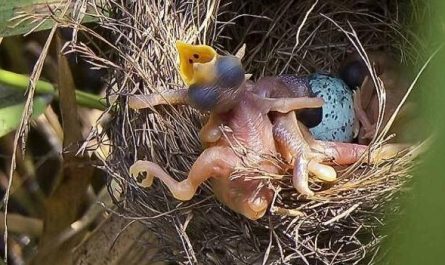The reason why frogs only eat moving animals
The photoreceptive cells in the first layer of the frog’s eye put the image of the external scene on the retina and convert the image into neuroelectric signals; the second layer of contact cells is responsible for transmitting the electrical signals to the third layer; the third layer of ganglion cells Detect image features and encode these electrical signals to pass to the brain.
Ganglion cells are divided into four categories, each of which performs a specific detection function, only responds to a certain feature of the moving target, and recognizes and extracts different features of the retinal image. In this way, a complex image is decomposed into Several easy-to-identify features have been added to improve the speed and accuracy of target discovery and identification.
Therefore, scientists call these four types of ganglion cells “detectors”, which are “edge detectors”, “bump detectors” (also called “insect detectors”), “contrast detectors” and “variable detectors”. Dark Detector”. The four types of detectors work together to make the frog only respond to the scenes that are critical to its survival.
Because the eyes of frogs are invisible (or invisible) to static things, the eyes of frogs are different from the eyes of ordinary animals. They are specially designed to see moving objects. In the eyes of frogs, moths and flies are not moving. There is no response. However, as long as the moth moves, the frog will immediately spot it, and according to its flying direction and speed, jump up and prey to its mouth. No wonder some zoologists jokingly say that frogs like to eat flies , But, if a frog sits in a pile of dead flies, it will starve to death.
The frog’s eyes also have a special ability to recognize different images. It can immediately recognize its favorite flies among flying small animals of various shapes, while those flying small animals are still The unmoving background does not react in the frog’s eyes. That is to say, the frog’s eye is not like a camera. It can take a picture of the scene in front of the lens without leakage. It only sees the scene that is useful to it. The frog’s eye can be agile. Find the moving target, quickly determine the target’s position, direction and speed of movement, and immediately choose the best attack posture and attack time.
Introduction to Frogs
Frogs belong to the amphibians of the Chordata, Amphibians, Anura, and Ranidae. Adults have no tails. The eggs are laid in water. They are fertilized in vitro and hatched into tadpoles. They breathe with their gills. After mutation, adults mainly use their lungs to breathe. , And use the skin to breathe.
Most frogs reproduce through in vitro fertilization, and the fertilized eggs hatch into tadpoles outside the mother’s body. Only 10 to 12 species of frogs in the world have evolved to be fertilized in vivo, and some of them will expel fertilized eggs from the body to hatch into tadpoles. However, frogs specifically refer to the black-spotted sidefold frog in zoology. Frogs have always been considered oviparous, but scientists have discovered that a frog that lives in the rainforest of Sulawesi, Indonesia, can lay tadpoles. This frog is the only frog that can “tadpole” among more than 6000 species of frogs in the world.
Frogs are slimmer and more adept at swimming. The neck is inconspicuous and has no ribs. The ulna of the forelimbs healed with the radius, and the tibias of the hind limbs healed with the fibula, so the claws cannot move flexibly, but the limbs are well muscled. The most primitive frogs began to evolve in the early Triassic. The earliest frogs with jumping movements appeared in the Jurassic period. Because frogs feed on insects and other invertebrates, they must live near the water. There are about 130 species of frogs in China. Almost all of them are experts in destroying forest and farmland pests.






